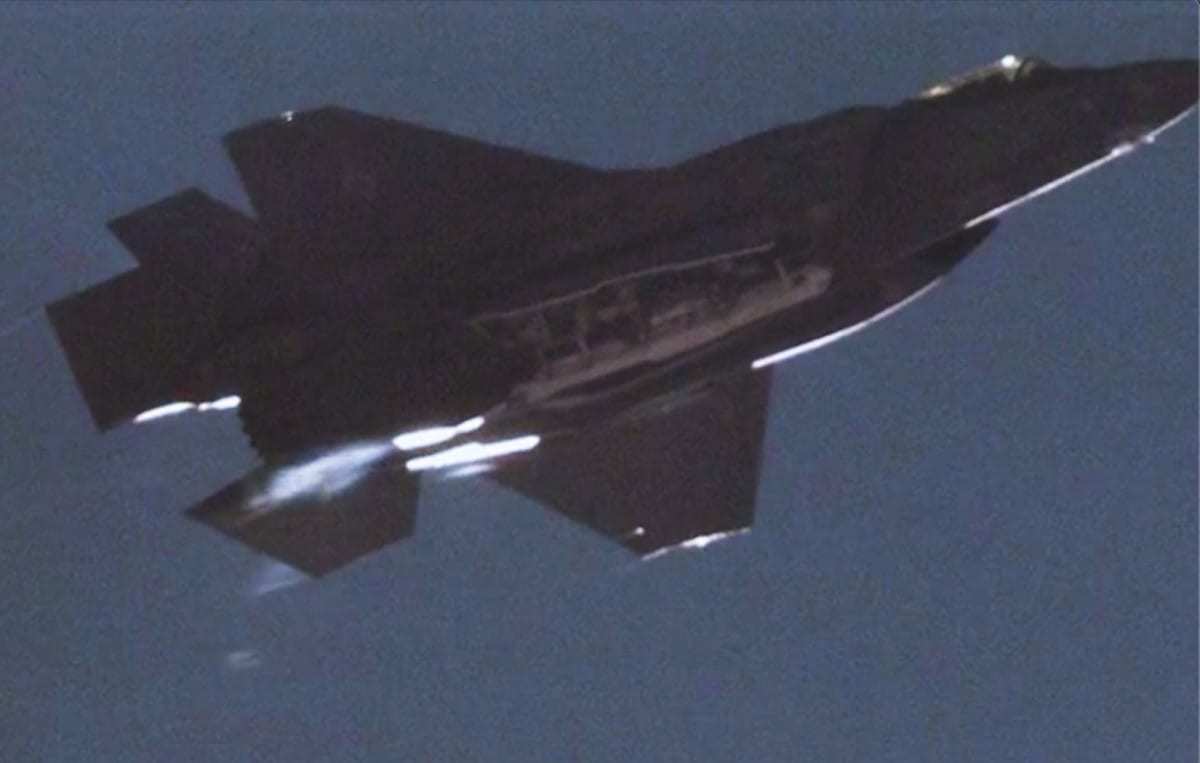The B61-12, Explained: The United States Air Force announced that a B-2A Spirit stealth bomber released a B61-12 Joint Test Assembly (JTA) utilizing a new capability known as Radar Aided Targeting System (RATS) during a capstone test at the Tonopah Test Range, on June 14, 2022. The test event, which was led by a collaborative effort between the 72nd TES, the 509th BW, Air Force Global Strike Command, the Air Force Nuclear Weapons Center, Boeing Company, and Sandia National Labs, was to improve weapon guidance accuracy in a Global Positioning System-degraded environment.
“We flew multiple sorties testing the new RATS capability over the last nine months and collected test points on its performance,” explained Capt. David Durham, 72nd Test and Evaluation Squadron B-2 weapons flight commander. “Using RATS for the JTA release demonstrated what the new capability brings to the warfighter. This test was also the first release of the production unit of the B61-12 JTA.”
The Air Force further stated that a software tool designed in-house by the 72nd TES was also flight tested. Dubbed the RATS Application Tool, it provides pilots an early indicator of the RATS’ functionality and can verify that the system is operating correctly prior to weapon release.
“This tool has opened the door for rapid and innovative software development in support of the B-2,” said Master Sergeant Matthew Gibson, 72nd TES lead analysis software developer. “Due to the success of this product, we’ve received requests to build tools for other in-flight capabilities from the 509th Bomb Wing and 325th Weapons Squadron.”
This month’s test of the B61-12 JTA is just the first of several to come. Future releases will be conducted during annual Weapon System Evaluation Program flight tests as part of a Department of Energy (DoE)/National Nuclear Security Administration (NNSA) and Department of Defense (DoD) surveillance tests.
The nearly 12-foot long, 825-pound bomb was designed to be delivered from the air in either ballistic or guided-gravity drop modes. The original B61 nuclear bomb, which was developed in 1960s, has remained the primary thermonuclear gravity bomb in the United States Enduring Stockpile following the end of the Cold War. The new variant was intended to improve the nuclear capabilities of the U.S. Air Force and allied nations.
B61-12: What Aircraft Can Actually Carry It?
It was developed as part of the B-61-12 life extension program (LEP), a joint effort between the U.S. Air Force and the NNSA. The B-61-12 is set to replace all of the remaining weapons of previous versions in the U.S. stockpile, including roughly 150 presently spread across six bases in Europe. According to official sources, the bomb could be air-launched by multiple aircraft platforms currently in service with the United States Air Force and NATO partners, including the B-2A, F-15E, F-16C/D, F-16 MLU, PA-200, F-35, and B-21.
However, The Drive reported that the Air Force has confirmed that there are no plans for the Air Force or NATO F-16 Viper fighters or Germany’s Panavia Tornado to employ the nuclear weapon in its signature guided mode. Instead, only the F-15E Strike Eagle fighter and B-2A Spirit bomber could carry the weapon, while the future B-21A Raider and certain F-35s could also employ the B-61-12.
This could clearly be an issue that won’t be easily resolved, and while it won’t impact nuclear deterrent readiness in Europe, it is a situation that will require the F-15E to remain deployed in Europe along with the F-35. Likewise, it could suggest that the B-21 will be Europe-bound when it enters service later this decade.
Now a Senior Editor for 1945, Peter Suciu is a Michigan-based writer who has contributed to more than four dozen magazines, newspapers and websites. He regularly writes about military hardware, firearms history, cybersecurity and international affairs. Peter is also a Contributing Writer for Forbes.

